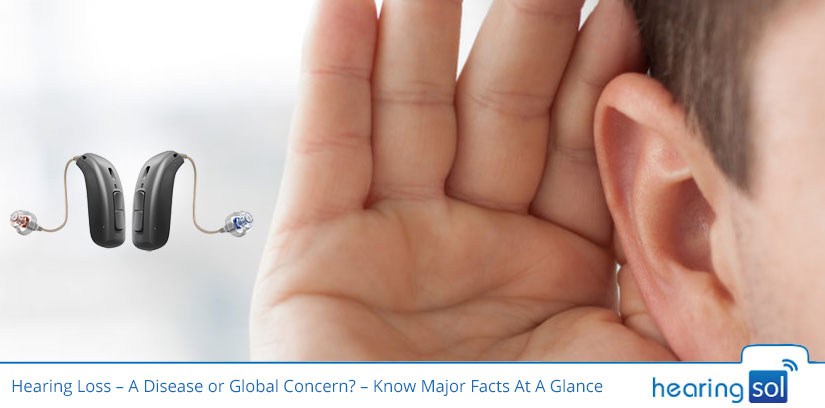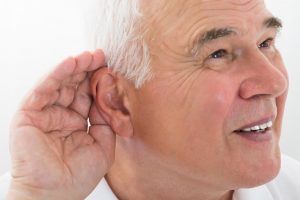
Today, the Hearing Loss Or Deafness Problem is turning out to be a major concern throughout the world. Interestingly, in most cases, the hearing loss occurred with preventable causes means we can prevent the occurrence of a hearing loss or deafness by taking care of our ears.

Table of Content
Hearing Loss Or Deafness Statistics
The effect of hearing loss or deafness across the globe is understandable, but we can better understand the plight of this phenomenon by considering some of the key facts of hearing loss worldwide.
In this article, we grab some interesting statistics regarding hearing loss or deafness globally which are as follows
- 1.1 billion young people with an age range from 12 to 35 are likely to be affected by hearing loss due to exposure to noise in recreational settings. Source [1]
- 124 million people are affected by moderate or severe hearing loss, out of this,108 million comes from middle or low-income countries. Source [2]
- More than 360 million (about 5% of the world population) have some sort of hearing loss and out of these, 34 million are the population of children. Source [2], [3], [4]
- The current availability of hearing aids just covers less than 10% of the requirement of these aids globally. Source [5]
- In developing countries, 20% of the people who have hearing loss needs hearing aids which is approximately 72 million in numbers. Source [5]
- In developing countries, just 3% of the people who require a hearing aid, have one. Source [5]
- Prevalence of hearing loss disability in high-income regions is 2.72 – 4.41%, in East and Central Asia it is 6.14 – 7.58% and in low-income countries such as Caribbean & Latin America, Sub Saharan Africa, South-East Asia, and the Asia Pacific it is 4.42 – 6.13%. Source [5]
- 15% of the world’s adult population has some kind of hearing disability, 25% of them are persons aged more than 65. Source [6]
- By the end of 2050, it is estimated that around 900 million people globally will come in the conjunction of hearing loss. Source [6]
- 60% of the children who are affected by hearing loss have this disability due to preventable causes. Source [6]
- Hearing loss which is not yet been identified, annually costs 750 million U.S Dollars $ globally. Source [7]
- Almost about ⅓ of the people above the age of 65 in the U.S have hearing loss. Source [8]
- In the United States, per 1000 children, 2 or 3 children are born with some level of Hearing Loss in either one ear or both ears. Source [9]
- In the U.S, more than 90% of deaf children are born to hearing parents. Source [10]
- Nearly 15% of the American adults ( Aged 18 or above ) have experienced some difficulty in hearing. Source [11]
- In the U.S, one out of eight persons aged 12 or above have a hearing loss in both the ears. Source [12]
- Still, in the U.S, five out of six children by the time they turn 3, are affected by Otitis Media ( Ear Infection ). Source [13]
- Hearing loss is the second most prevalent health issue in the world. Source [14]
- One out of ten Americans is affected by some sort of ringing in the ear (tinnitus) on a regular basis. Source [15]
Data Sources
- Global burden of disease 2013, collaborators (August 2015). “Global, regional, national incidences, prevalence, and years lived with disability for 301 acute and chronic diseases and injuries in 188 countries, 1990-2013: a systematic analysis for the Global Burden of Disease Study 2013”. Lancet. 386(9995): 743–800. doi:10.1016/s0140-6736(15)60692-4. PMC 4561509. PMID 26063472.
- WHO (2008). The global burden of disease: 2004 update (PDF). Geneva, Switzerland: World Health Organization. p. 35. ISBN 9789241563710. Archived (PDF) from the original on 2013-06-24.
- Olusanya BO, Neumann KJ, Saunders JE (May 2014). “The global burden of disabled hearing impairment: a call to action”. Bulletin of the World Health Organization. 92 (5): 367–73. doi:10.2471/blt.13.128728. PMC 4007124. PMID 24839326.
- “Deafness and hearing loss Fact sheet N°300”. March 2015. Archived from the original on 16 May 2015. Retrieved 23 May 2015.
- Millions of people in the world have hearing loss that can be treated or …https://www.who.int/pbd/deafness/news/Millionslivewithhearingloss.pdf
Data Source: WHO Deafness Prevalence Estimates (MBD Unit), Map production: prevention of Blindness and Deafness (PBD Unit). World Health Organization … - WHO global estimates on the prevalence of hearing loss – World Health …https://www.who.int/pbd/deafness/WHO_GE_HL.pdfSource. Hearing Loss Estimates MBD: All degrees of hearing loss for adults … MBD, WHO, 2011 DHL estimates, adult threshold is ≥41 dB.
- Global cost of unaddressed hearing loss and cost-effectiveness of …https://apps.who.int/iris/bitstream/10665/254659/1/9789241512046-eng.pdf
- Age-Related Hearing Loss | NIDCDhttps://www.nidcd.nih.gov/health/age-related-hearing-loss
- Centers for Disease Control and Prevention (CDC). Identifying infants with hearing loss – United States, 1999-2007. MMWR Morb Mortal Wkly Rep. 59(8): 220-223.
Vohr B. Overview: infants and children with hearing loss—part I. Ment Retard Dev Disabil Res Rev. 2003;9:62–64. - Mitchell RE, Karchmer MA. Chasing the mythical ten percent: Parental hearing status of deaf and hard hearing students in the United States. (PDF) Sign Language Studies. 2004;4(2):138-163.
- Mitchell RE, Karchmer MA. Chasing the mythical ten percent: Parental hearing status of deaf and hard hearing students in the United States. (PDF) Sign Language Studies. 2004;4(2):138-163.
- Lin FR, Niparko JK, Ferrucci L. Hearing loss prevalence in the United States. [Letter] Arch Intern Med. 2011 Nov 14; 171(20): 1851:1852.
- Teele DW, Klien JO, Rosner B. Epidemiology of Otitis Media during the first seven years of children’s life in greater Boston: a prospective, cohort study. J Infect Dis. 1989 Jul;160(1):83-94.
- Hearing Loss – World Health Organization www.who.int/healthinfo/statistics/bod_hearingloss.pdf
- One in ten Americans have experienced ringing in the ear( tinnitus) – Health Day

 Reviewed by Mr. Ranjeet Kumar
Sr. Audiologist, Speech Therapist & Cochlear Implant Specialist, BASLP on
Reviewed by Mr. Ranjeet Kumar
Sr. Audiologist, Speech Therapist & Cochlear Implant Specialist, BASLP on